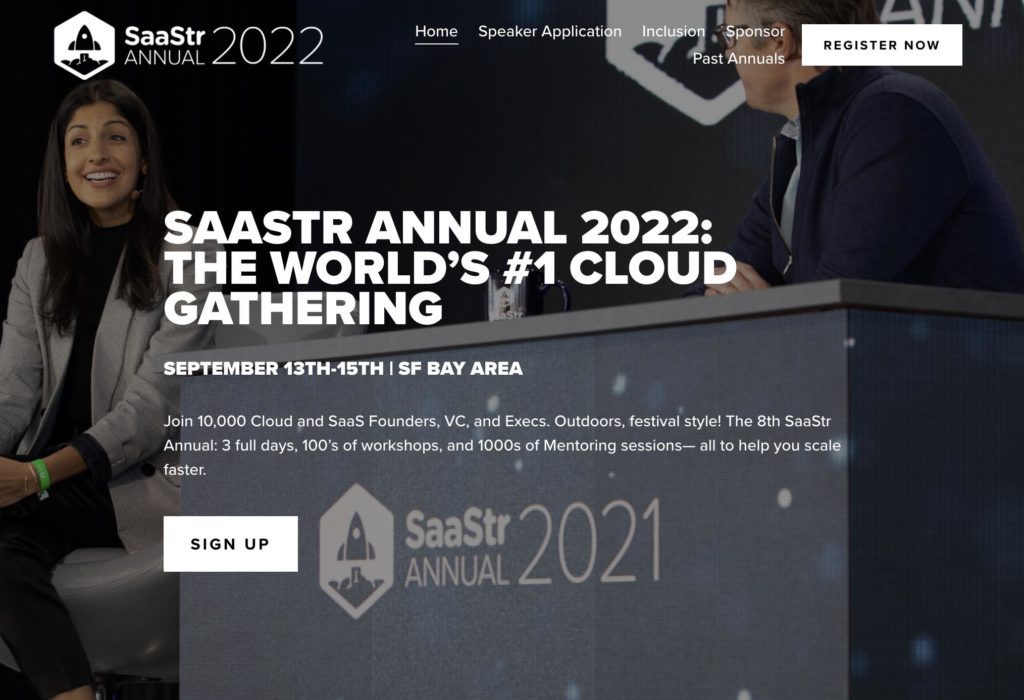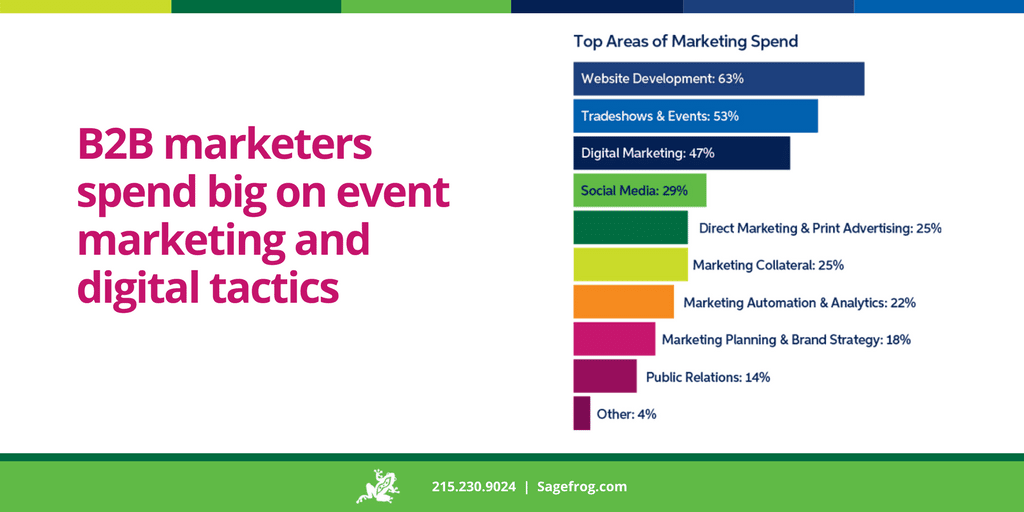Events. Not digital events, which exploded since Covid. But good old-fashioned, in-a-convention-center events are coming back. And boy, has it been a while. SaaStr Annual 2021 was the largest tech event in the Bay Area in all of 2021!
Dreamforce may come back this year. SXSW is back, as is WebSummit and more. Events are back on.
But are they worth it? Not just the hard costs, but all the soft costs, too? Especially these days. Haven’t we all moved to a distributed world? Can’t we all close $1m deals on Zoom now? Don’t we all just work in the cloud now?
It took me a long time to have a strong opinion on events (yes, there’s some irony there, given that we put on SaaStr Annual, SaaStr Europa, etc.). In my first start-up, we were hunting big whales — $1m+ deals. There was one big industry event a year. We went. We met both our key partners there, connected with one of our key customers and met a key stakeholder there we hadn’t yet met, and brought back one — (1) — lead. But that lead was worth potentially $1m a year, and was a lead we weren’t doing a great job of otherwise building a relationship with. Six weeks later, we were at their HQ, talking a long term deal.
But once I started doing SaaS and dealing with much smaller deal sizes, I wasn’t sure. We did the biggest events in the industry — Dreamforce for “sales”, and SHRM for HR — and they seemed to be worth it. Even though the leads sure took a long time to close.
It probably wasn’t until our 4th Dreamforce, though, when I started to get it. A bunch of bigger customers I’d never met came by to meet us, at our booth in particular. I remember they brought a lot of gripes in particular (maybe happy customers just grab a T-shirt and go). But I took the gripes back, addressed the issues, and never lost those customers. At this same Dreamforce, we also met with a bunch of prospects. One of them was a web leader already in the pipeline but stuck there. They quickly closed the week after meeting at Dreamforce for a nice six-figure deal.
It was then that I finally figured out there are 3 reasons to “do” events, and the impact will vary based on your stage:
- Lead generation. This absolutely works, but the hit rate can be low, and the timeline longer than a warm in-bound, so lead-gen probably only works well at the biggest events with the most on-point prospects. Do the big ones. But the small ones often just don’t have enough buyers. If you sell to C-level execs or VPs, you want to be at the few events they actually go to each year. Often it is just 1 or 2. It’s also simply easier to do the 1 or 2 largest events in the industry than to do 10-20 smaller ones, at least until you have a much larger field marketing team.
- Pipeline meetings & reinforcement. Even wonder why Dreamforce is in the Fall? To help the reps close deals before the end of the year! Key events are a great way to meet up with prospects already in the pipeline, but not yet closed. They’ll come to the big events in the industry, and they’ll meet you when they are there. Your own event can do this as well. So maybe do both.
- Customer success and marketing. And this is the part that field marketers and CEOs often don’t attribute enough ROI to. It took me a while. But at the biggest events in the industry, your customers will all be there. Yes, you can meet them at your own events as well. But probably even more will come to the biggest events in the industry than your own events. And again, do both. Have a big booth, have dinners and meet-ups, and all that. Yes, it’s expensive. But it’s much cheaper than flying to visit all of them. And if you have 1000s of customers, you can’t go visit all of them anyway. The more customers you have, the higher the per-customer ROI of doing the biggest events in the industry is.
So yes, events are expensive. But at least measure them by these 3 metrics, not just one. And importantly — staff your booth and events with the professionals targeted at whichever of these three goals are most important. If you want to generate leads, staff up with SDRs. Pipeline support? AEs. Customer marketing? More CSMs.
Then you have to ask yourself — what else could I do with the time? There are two classic alternatives. Both do work:
- Do your own customer event. You absolutely should do this — and early. More on that here. And done right, they help a ton with lead gen, pipeline, and customer marketing. But even if you are great at your own events, leveraging someone’s else’s huge event is at least going to be another shot each year at it. Yes, your customers may come to your own event. But if they also go to Dreamforce, SaaStr Annual, whatever … then you get two shots at it.
- Just hack an event — try to meet people, rent a suite, etc. This sort of works. But it has a few problems. First of all, most of us aren’t actually good at it. You have to be incredibly extroverted, with the right script, to make a smile-with-business cards strategy really work at any event. Yes, booths can seem a bit old-fashioned. But buyers are wired to visit them when they are interested in potentially buying. It’s a well-understood format for prospects and customers alike. Most of us are better off spending a few nickels to have a product produced for us that is tailor-made for discovery. If you are going to bring back real pipeline and customers, you want to do it the right way. More often than not, it’s the way most integrated into the discovery process built into IRL events.
Now here’s something you might not know: Field Marketing is the largest category of marketing spend. The largest. Many mid-market and enterprise SaaS companies spend 40% of their entire marketing budget on events and field marketing. Getting out there with events, dinners, meet-ups, and more works. If nothing else, find a way to make field marketing work for you. Yes, it is more effort than buying Adwords or writing a blog post, and it might seem more efficient to just do a low-engagement digital event. And field marketing often works best at somewhat larger price points ($10k-$1000k+ ACV), because of the relative yield per event. 30 great leads at $100k ACV can be game-changing. 30 great leads at $1k ACV is tough.
Done right, though — events work. They are frustrating, crowded, and tiring. But there’s a reason 40% of marketing goes into the field and events.
If you can, learn to make them work for you. Be where your customers and prospects are, and you close me.
(note: an updated SaaStr Classic post)



